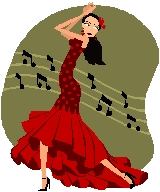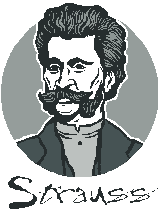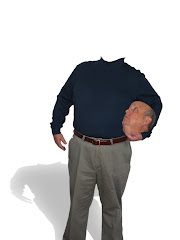Tuesday, September 09, 2008
Songwriters Who Sing Their Own Songs
The singer-songwriter is a modern popular music phenomenon. The term's meaning is fairly implicit; a singer-songwriter is a musician who not only performs but also writes the music that they are performing. Though the act of writing your own material is somewhat par for the course in modern popular, rock and country music, the term evolved in a time when singers and performers, not songwriters, ruled the day. As the presence of performers who composed their songs became more and more common, the term singer-songwriter switched to refer to a specific style of music, one that is often associated with folk or country traditions.
Though a Latin tradition had started years before, the American singer-songwriter appeared in the late 60s and early 70s. It was a style bred out of necessity in a tumultuous time; songwriters typically shied away from writing about touchy, political topics, and the many folk artists, including Carole King, Bob Dylan and James Taylor, felt the need for an alternate view to be expressed. Additionally, these singer-songwriter artists (many of whom had been writing for other musicians) desperately wanted to perform their own material instead of handing it over to someone else destined for its glory. It took awhile, but record labels eventually latched on to the singer-songwriter influx, understanding its impact on both the public and the industry.
As time passed and the war ended, the folksy singer-songwriter tradition seemed to slow considerably, but the mark had been made; artists attracted to the singer-songwriter trend began writing and performing their music, forcing self-composition into the limelight as an industry standard. And even though nearly every rock band could be considered a group built of the singer-songwriter, the term stayed firmly rooted within the folk tradition; the label itself didn't re-emerge until the mid-90s, when a wave of female singer-songwriter artists such as Indigo Girls, Sarah McLachlan and Suzanne Vega revived the original form. It has since branched slightly out of the folk scene, encompassing such rock-influenced singer-songwriter artists as Bright Eyes and Dashboard Confessional.
Monday, September 08, 2008
Songwriting Is More Than Writing a Song
Songwriting is, in it's most basic definition, the act of writing a song (obviously).
But the word doesn't even have to apply to that specifically; the term songwriting is often used to describe the writing of individual song parts, such as the guitar or vocal melodies. Strictly speaking, songwriting and composing are interchangeable words. They do, after all, denote the exact same thing. But the connotation here is radically different. While composing is seen as the province of classical musicians who actually record their compositions onto sheet music, songwriting is far more informal, the work of rock, pop, folk or country musicians who may take some notes, but generally commit everything they've written to memory.
The actual act of songwriting varies from musician to musician. Some say that solo musicians have the easiest time of songwriting, writing whatever they want without having to clear it with a band or partner. But solo musicians also carry the burden of songwriting wholly on themselves. When they lack inspiration for a certain part or harmony, they don't necessarily have someone to fix the songwriting block for them. Musicians songwriting as part of a group, however, are given the luxury of using their band-mates as a sounding board.
In many band situations, no one person is responsible for all the material; someone will write a part, which is then elaborated on by the others. For instance, a guitarist may come to band rehearsal with a solid verse and chorus. The drummer may then write a series of parts based on the guitarist's part, the bass will write based on the drums, and keyboards or other instruments will write based on that core grouping. Vocal melodies are frequently the province of the vocalist alone, and while every musician has some say in what the other musicians are playing, the songwriting from instrument to instrument is largely the decision of the individual musicians. There are no strict rules to songwriting; whatever works for the musicians in question becomes the norm.
Saturday, September 06, 2008
Mp3’s – The Future of Music?
Mp3 music is audio that has been digitally encoded and compressed to make the amount of data smaller without compromising the overall sound quality. It's a revolutionary technique with incredibly good results; mp3 music is frequently indistinguishable from music found on a CD (though some audiophiles with very sensitive ears dispute that statement). The popularity of mp3 music made available on the Internet is a trend reaching gigantic proportions; these encoded songs are everywhere. Websites called mp3 blogs offer rare or hard-to-find mp3 music and avid fans sometimes spend hours at a time sifting through the piles of downloadable material. Newer recording artists that would often fall under the radar without the help of a well-known label are now able to convert their songs into mp3 music and make them available on the Internet, allowing huge numbers of people the chance to hear songs that they otherwise wouldn't have been exposed to. It's an extremely popular thing, mp3 music, one of those rare pop-culture phenomena embraced by nearly everyone.
But regardless of its massive popularity, mp3 music is surrounded with controversy. Many programs that allow users to transfer mp3 music directly from computer to computer offer the services for free, eliminating the possibility of royalties for the artist and label. Fearful of losing tons of money to fans downloading records instead of buying them, large factions of the music industry fought to make free mp3 music illegal -- and succeeded to a degree. The laws, however, have loopholes, and many websites or P2P programs have exploited them for all they're worth. Additionally, laws regulating mp3 music in the United States aren't necessarily applicable to other countries, so new websites and programs (particularly, for some reason, in Russia) have popped up offering the free services railed against in America. Because of the hotly argued ethical issues surrounding mp3 music, many shy away from the topic (and practice) completely. Others embrace it, citing huge record costs as justification enough for free mp3 music. It's an argument not likely to end anytime soon; the ethical issues will be debated as long as free mp3 music is available somewhere.
Friday, September 05, 2008
What exactly is a "rhumba"?
The rhumba is a Cuban style of dance and music with strong African roots; it's very percussive and rhythmic, similar in many ways to a bossa nova. But the modern rhumba, the Americanized rhumba we recognize today, has undergone several radical changes from the African version brought to Cuba via the slave trade. The African rhumba, noted in the 16th century, is highly sexual and aggressive. The music is energetic, fast, staccato; it mimics the aggressiveness found within the dance. The staccato beats are very exaggerated, as exaggerated as the movements that go with them, and the instrumentation is mostly percussion.
The Cuban rhumba, first discovered in the 18th century, is far less aggressive than the African form. It's slightly slower and retains its intimacy without being quite as overtly sexual. The general consensus of the time was that the African rhumba, popular in its own right, was far too raunchy. It embodied a blatant sexuality that many people found to be indecent. The dance itself, however, had so many popular characteristics that to let the form die completely would be almost unthinkable. Instead, the African rhumba was toned down into a more subtle form and given some Latin elements particular to the area.
But that wasn't the last we'd see of the highly sexualized rhumba. Strangely enough, the form was given back some of its aggressiveness upon its arrival to the United States during Prohibition. This was a time when cabarets ruled the day and indecency among these circles (though certainly not in the mainstream) was almost encouraged. The rhumba became a common part of cabaret acts, though it was changed slightly to adapt to the stage. Of course, the cabaret rhumba still wasn't as overtly sexual as the African rhumba, but it fit somewhere neatly in between the African and Cuban versions.
Eventually the cabaret rhumba evolved into the modern rhumba, the ballroom dance still danced and played today. This version of the rhumba was toned way down from the African and cabaret versions (even from the Cuban rhumba) and danced slightly faster than usual. This version of the rhumba focused more on the romantic and intimate than the sexual and quickly became known as the dance of love.
Thursday, September 04, 2008
Music Books Galore!
It's truly astounding, the sheer variety of music books on the market today. They are music books covering every historical and modern composer, both musically and biographically. Whole genres are described in 500 pages or more, musical movements detailed to their very core. Individual popular artists with authorized and unauthorized biographies; musicology; lyrical analysis; how to start a band, join a band, manage a band, destroy a band -- it's all covered in the pages of thousands and thousands of music books. And that doesn't even crack the crème brulee of music books filled with sheet music and theory and various lessons. College bookstores are stacked to the walls with these kinds of music books and elementary schools all over the country rely on the basic forms to teach children the basics of music
Those instructional music books are by far the most common type, though they're usually found in educational bookstores as opposed to your local bookseller's shop (or even one of the virtual book mega-malls). The basis of the lessons in music books vary greatly; that, of course, is beauty of them. Some music books will be filled with solely sheet music; though you'll most frequently see these type of music books for piano, they come intended for nearly every instrument imaginable. Music books of this sort are usually divided into volumes based on skill level and frequently used for individual instrument lessons.
Other types of instructional music books, usually those used in required music classes, will contain a combination of sheet music and other lessons, such as theory and history. For instance, music books used in elementary schools will sometimes have a section based on a particular musical genre, such as American spirituals or rock & roll; this section in the music books will contain a brief history of the genre, the rhythmic or thematic elements of the genre and a short excerpt of sheet music (usually vocal) to be played by the students. These music books function as an early primer for young students, teaching them a wide array of various genres and forms.
For piano books online a good source is Top Piano Books
Wednesday, September 03, 2008
What is an "orchestra"? Is it the same as a band?
The orchestra is perhaps the most recognizable figure within the classical music genre; it's an instrumental ensemble that plays classical music and its many off-shoots. A counterpart of the orchestra, the symphony orchestra, is a variation of the ensemble that plays only symphonies -- although in more modern times, the term symphony orchestra refers to any large orchestra, even one that isn't exclusively symphonic. At any rate, the orchestra is an integral part of any local music community, one that provides endless entertainment (and even employment) for those most interested in the form.
The basic difference between an orchestra and a band is the instrumentation - a band almost never has stringed instruments such as violins, violas, and cellos. It often, however, has either an upright bass or an electric bass. And a band typically plays music that is "less classical" than an orchestra. Many bands play mostly marches, while other bands play pop and jazz oriented music.
An orchestra is comprised of four instrument groups: strings, which feature violins and cellos; brass, which features French horns, trumpets and trombones; woodwinds, which features flutes, clarinets and bassoons; and percussion, which features any number of drums (including snare, bass and timpani) in addition to the piano or sometimes harpsichord. The number of individual musicians within an orchestra depends largely on the orchestra in question, its location and its type. An orchestra in a large city will often require a large number of employed musicians (the orchestra is, after all, a full-time job) of which only a fraction will play at any given performance; an orchestra as such will sometimes have 80 or 90 musicians on the payroll with only 40 or so seats for performance. It's not uncommon for an orchestra to keep several musicians on hand that aren't necessarily regular members of the orchestra; sometimes a special instrument not found within the roster will be required for a piece, in which case the orchestra will call on one of their in-the-wings musicians. Additionally, some larger cities will feel the need to include more than one orchestra in the area, all with different names; it is here that a symphony orchestra and an orchestra will utilize the name difference without any real style switch.
Tuesday, September 02, 2008
What possible good are piano recitals?
When I was taking piano lessons as a small child, I used to dread piano recitals at the end of each school year. And I imagine most kids feel about the same. But there is some long-range benefits to participating in recitals as well which really won't be fully appreciated until one is an adult and has some perspective.
I remember one particular recital when I was about in the 4th or 5th grade. I played something very simple like "Swans on the Lake" or some such, and another boy of the same age I didn't know at the time played "Kitten on the Keys" -- a uptempo, jazzy piece with lots of notes -- much more advanced than my little piece. It wasn't his fault, of course, but I felt absolutely humiliated and wanted to quit piano lessons immediately.
I'm sure glad that wiser heads prevailed (my Mom and Dad), because in high school this kid and I became best friends and played in the same combo -- he on tenor sax and me on piano. By then I could play circles around him (on piano, not sax!) simply because I had learned chords and also learned how to improvise. And our friendship has lasted up to this present time.
A piano recital is just another name for a piano performance; the term is typically associated with amateurs or non-professionals, but that is not always the case. But regardless of skill level, whether the pianist is a professional or an amateur, a piano recital can be a harrowing, nerve-wracking experience. It requires months of practice and a certain level of confidence to showcase your abilities in front of an audience, and that pressure has a way of wearing on even the most seasoned piano recital performers. With proper preparation and plenty of time, however, those pre-piano recital jitters can be kicked right out of the room; it just takes a little dedication.
Having a helpful teacher is definitely beneficial to piano recital preparations. But if you don't have access to large amounts of help, a few important steps can get you through the piano recital preparations on your own. The first step, obviously, is to pick the music for the piano recital. It's best to pick a piece that hasn't been done to death, something that will surprise and enlighten the audience. That being said, it's also important to choose a piece within your skill level; the goal here is to put on a great piano recital, not to struggle with an overly advanced piece.
After you've chosen your piano recital music, locate a recording of the composition or several different performances if you can find them. Listen to how other musicians play the piece, tune in the subtleties, the texture. But don't use this as a tool for copying; one you're well into practices for the piano recital, put the recordings away.
The next (and most important) step in the piano recital preparations is to begin practicing as early as possible. Know the piece like the back of your hand, don't let any surprises come up the night of the piano recital. In the early stages of practice, get in the habit of memorizing the material and taping what you've worked on for the day. You can later use those tapes to give you an objective view of your piano recital, to hear if you're making any critical mistakes.
Monday, September 01, 2008
What is a "Musical Tritone"?
The prefix "tri" refers of course to a group of three, as in trinity, tricyle, triathelon and so forth. A musical tritone is an interval of three whole tones (whole steps) or six half tones (half steps). Simply put, a tritone is an augmented fourth or diminished fifth, depending on the key. A tritone is typically created by adding an accidental, but it's found naturally on the fourth and seventh degrees of any scale. In a C major scale, for instance, the tritone would be found by playing the F and B simultaneously.
Tritones are significant because of their ability to create a heavy, uncomfortable dissonance. It's so uncomfortable, in fact, that it has been referred to as the devil's interval and was strongly discouraged during the Baroque period -- a time when the pleasing sound of perfect fifths ruled the day. But despite its rather nasty stigma, the tritone has the power to be pleasing and even somewhat consonant when used correctly. Because it's one of the most moody and easily personified intervals, the tritone is frequently used to foreshadow a heavy resolution.
Additionally, the tritone is helpful to jazz musicians who employ a technique called "tritone substitution." This substitution is possible by playing a dominant seventh chord that uses a root a tritone away from the original dominant seventh. Because the interval pitches are the same, the chords become interchangeable, thus giving the musician a bit more freedom to explore possibly melodies and harmonies during an improvisation.
Jazz isn't the only type of modern music to use the tritone, however. Though it was frowned upon in the early ages of western music, dissonance is far more acceptable today; in some cases, it's even what draws an audience to a certain piece of music. The tritone can be found in nearly every area of modern rock and pop, but it's exploited most often in heavy metal music that prides itself on sounding eerie or evil. Metallica and Black Sabbath have used the tritone to wondrous effect, and one of Jimi Hendrix's most famous songs, "Purple Haze," is based almost entirely around the dissonant chord. The well-known 17-minute song "Inna Gadda Di Vida," by psychedelic rockers Iron Butterfly, also used the tritone during an extended keyboard solo as a way to break the glory of a series of perfect fifths. It's a good thing they weren't around during the Baroque period.
Sunday, August 31, 2008
What is a "Waltz"?
The waltz is a genre of music primarily intended for the purpose of dancing the waltz, a graceful, intimate ballroom dance, and later of course, listening to the artistry of the composer and performers of the waltz. Waltz music is always in 3/4 time with a strong emphasis on the measure's first beat -- think TRA-la-la, TRA-la-la. Each measure generally contains only one chord, and that chord is preceded by a bass note played on the first downbeat; the TRA represents the bass, and the la represents the chord. Waltz is a gentle, flowing style of music, a style so elegant that it is often associated with the upper class and aristocratic finery.
But the ties between the waltz and the rich haven't always been so solid. In fact, an overwhelming majority of the upper class shunned waltz music until Austrian composer Johann Strauss Sr. began toying with the style. Prior to Strauss Sr., the waltz was typically thought of as too common, too entwined with the peasant culture. But Strauss Sr., in conjunction with another Austrian composer, Josef Lanner, brought a new sort of grace to the waltz, an elegance and gentleness that was very easily embraced by the upper class. Strauss Sr. and Lanner made waltz music listenable for its own sake; before them, waltz music was rarely heard outside of the dance.
While Strauss Sr. and Lanner popularized the waltz worldwide (or at least throughout Europe), it wasn't until Johann Strauss Jr. that the waltz became massively popular in Vienna. Strauss Jr., taking a cue from his incredibly influential father, began composing a form of the waltz much faster and energetic than those written by Strauss Sr. and Lanner. This type of waltz music spawned a new, faster form of the dance, the Vienna Waltz, which is still danced today. It was Strauss Jr. that created the type of waltz we now hear so frequently, and his contribution to the form gave him the title "Waltz King." "The Blue Danube," perhaps the most famous waltz in history, was composed by Johann Strauss Jr.
Saturday, August 30, 2008
What is a digital piano?
A digital piano is an electronic, keyboard-based instrument similar to a synthesizer but made to function more like a piano than any synthesizer does. A digital piano actually falls in category somewhere between synthesizers, which are made to produce extremely artificial sounds, and electronic pianos, which are made to be portable versions of pianos. A digital piano typically contains many piano-like features, such as full 88 key keyboards (though some are much smaller), a variety of different functioning pedals and weighted keys. But the sounds found on a digital piano vary from that of both an acoustic piano and a synthesizer. While a digital piano always includes a normal grand piano sound of some sort, it may also contain the sounds of other piano types, such as honky-tonk or upright. Additionally, a digital piano will often include sounds complementary to a piano, such as strings, brass and percussion.
What makes a digital piano sometimes more desirable than an acoustic piano (when it comes to popular music, at least) is the sheer number of features that enhance the experience of playing. For instance, one push of a button can transpose the entire keyboard on a digital piano to any key desired and middle C can be placed anywhere on the keyboard. Additionally, the keys on a digital piano can be adjusted to have as much or as little touch sensitivity as the pianist desires. A digital piano can also control a variety of audio functions, including sustain and delay, and be used as more of a synthesizer than a piano. And what's more, a digital piano can be programmed to play more than one sound when kitting a key or the keyboard can be split to put the bottom half at one sound and the top half at another. It's an extremely versatile instrument; a digital piano can be made by its user to sound exactly like a real piano or anything but.
Subscribe to:
Posts (Atom)











